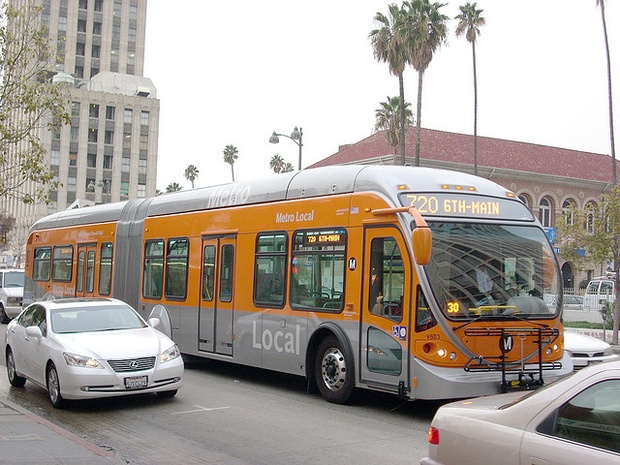Closing the support-usage gap will be key to a strong public transportation future.

Every transit advocate knows this timeless Onion headline: “98 Percent Of U.S. Commuters Favor Public Transportation For Others.” But the underlying truth that makes this line so funny also makes it a little concerning: enthusiasm for public transportation far, far outweighs the actual use of it. For instance, the American Public Transportation Association reported that 74 percent of people support more mass transit spending. But only 5 percent of commuters travel by mass transit. This support, in other words, is largely for others.
What’s more striking about the support-usage gap is that it doesn’t just exist on paper. In addition to saying they support transit funding, Americans back up that support with their own pocketbooks. Time and again at the polls, people are willing to raise local taxes to maintain or expand the transit service that so few of them actually use. According to the Center for Transportation Excellence, there were 62 transportation measures on ballots across the country in 2012—many with a considerable transit component—and nearly 80 percent of them succeeded.

“People believe transit has collective benefits that don’t require their personal usage.”
One of the clearest examples of the disparity comes from Los Angeles County. In 1980, about 7.5 percent of commuters used transit. That year, voters approved a permanent half-cent sales tax increase to pay for transportation initiatives, including lots of transit upgrades, but by 1990, the share of transit commuters had declined to 6.5 percent. That year, voters again approved a half-cent increase by a two-to-one margin, with nearly all the money going to transit. But the transit commute share was still at 7 percent come 2008, when yet another transportation ballot, Measure R, was passed by two-thirds of the vote.
From our partners:
So why do so many people support transit—not just with their voices but their wallets—when they have no intention of using it? The conclusion reached by Manville and Cummins largely echoes that of the Onion: people believe transit has collective benefits that don’t require their personal usage. Maybe voters think transit will reduce traffic congestion, or improve the environment, or help low-income residents, or translate into economic development. So long as someone else uses transit right now, everyone else will win in the end.
This outcome may seem obvious, but the data behind it are truly staggering. Take a look at one analysis Manville and Cummins perform on a transportation survey conducted by the Natural Resources Defense Council in 2012. They found no statistical connection between respondents who supported transit funding and those who wanted to drive less, or even those willing to use transit if it were more convenient. But respondents who believed “the community would benefit” had a 700 percent increase in odds of being a pro-transit voter. The researchers write in the journal Transportation:
“Put simply, Americans are more likely to see transit as a way to solve social problems than as a way to get around.”
This doesn’t have to be a bad thing, so long as people indefinitely keep paying for transit they don’t use. Perhaps that’s even a sign of societal maturity. But problems will arise if voters stop agreeing to devote their taxes to transit because the broader benefits they’ve hoped for fail to materialize. Of course, the reason these benefits don’t emerge is that the very people supporting transit aren’t riding it: traffic congestion isn’t going to get any better, after all, if every driver waits for someone else to shift to the subway or the bus.


Where all these trends converge is the realisation that truly supporting transit requires more than just voting to support transit. To make a real dent in mobility trends, cities will need to make driving more expensive at the same time that they make transit more appealing. “So long as many transit supporters prefer to drive, new transit spending may neither increase transit ridership nor reduce driving,” write Manville and Cummins. “Taxing driving, in contrast, could accomplish both.” But it doesn’t take the wisdom of the Onion to know that’s an idea far less than 98 percent of commuters will support.
This feature originally appeared in CityLab.














